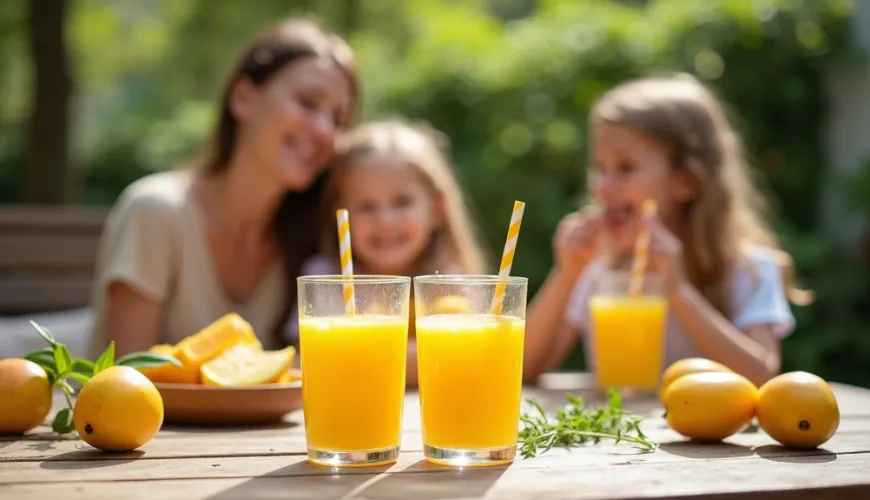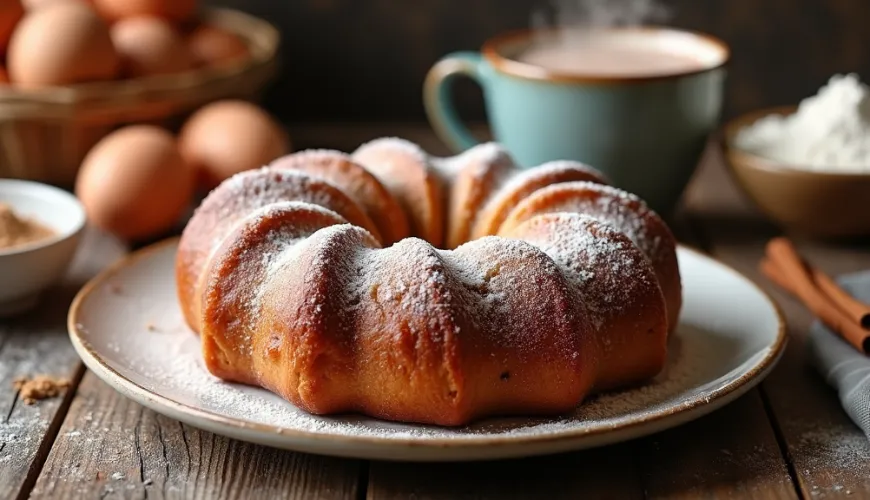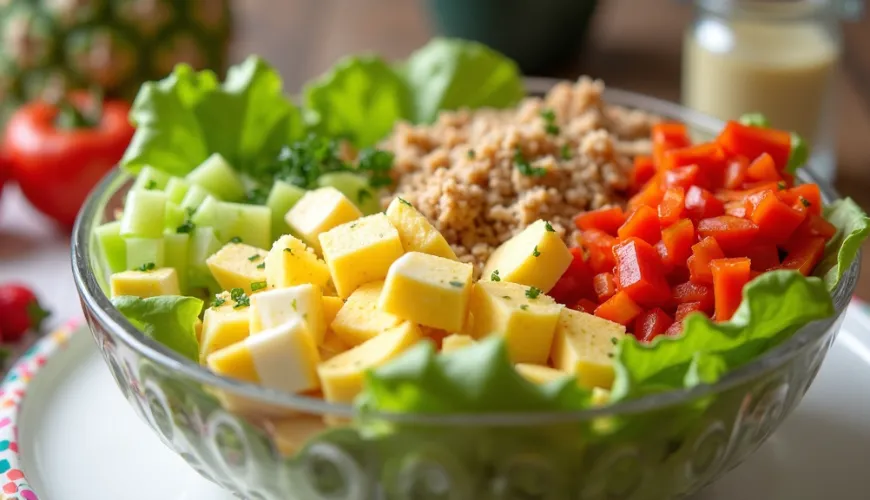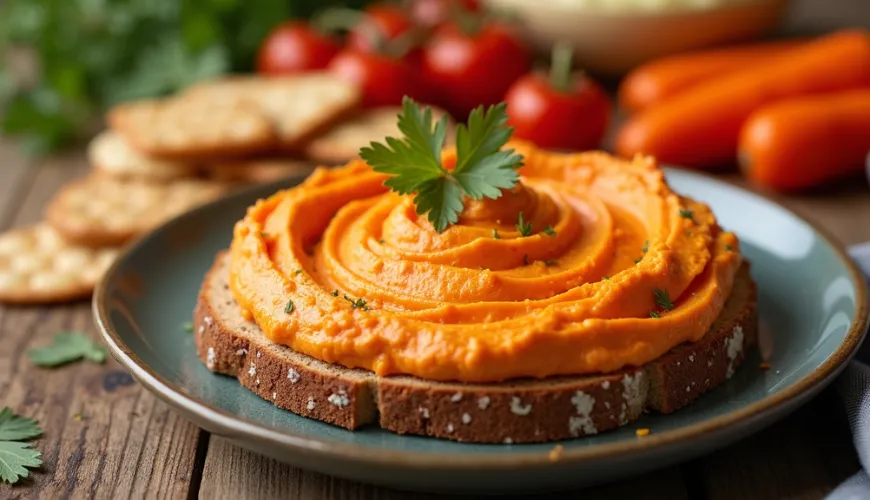
How to Bake Babka at Home and Enjoy Its Unique Flavor

Babka - The Return of a Traditional Recipe with the Scent of Home
Some words carry memories within them. "Babka" is one of those words. For many, it evokes the aroma of sweet dough wafting from the kitchen, childhood fingers smeared with chocolate, and moments of peace with a mug of cocoa. Babka, a chocolate or cinnamon sweet bread originating from Eastern Europe, has recently gained popularity again—not only as a nostalgic treat but also as a stylish dessert appearing in cafes, markets, and home bakeries of quality pastry enthusiasts.
What Exactly is "Babka"?
The name "babka" in Polish and Yiddish means "grandmother." This brings us to the essence—it's a traditional sweet yeast pastry that resembles a bundt cake or strudel but has something extra in its visual structure and taste. It features layered dough twisted into a spiral, often with a rich filling—most commonly chocolate, nut, or cinnamon. The spiral is one of its main hallmarks—babka is not only delicious but also aesthetically appealing.
This sweet treat has its roots in Jewish communities in Eastern Europe, from where it spread to Israel and the United States due to migration. There, it experienced a modern revival, especially thanks to bakers who adapted the classic recipe to contemporary tastes and added various new ingredients—like tahini, salted caramel, or pistachios. The transition from traditional to modern is also happening in Europe, where babka is becoming not just a trend among bakers but a symbol of returning to simplicity.
Babka as a Symbol of Slow Baking
In an era where most desserts rely on quick recipes and ready-made mixes, babka brings a return to patience. Its preparation requires time—the dough is left to rise, then rolled out, thoroughly filled, twisted, and placed into a mold to rise again. However, this process is not an obstacle but part of its charm.
Much like homemade bread, the result is more than just a dish—it's a ritual. For some, babka is baked every Sunday, for others only on special occasions. In any case, it brings people together around the table. And therein lies its strength. It's not just a sweetness; it's a bearer of stories and memories.
Do you remember that moment when you stood by the oven as a child, waiting for grandma's babka to bake? The dough puffed up, the butter smelled heavenly, and you watched impatiently, wondering when it would be ready. Then came the first slice—still warm, gently crispy on the edges, but soft and so sweet inside that one slice was never enough.
A More Sustainable Approach to Baking
In today's world, where there is increasing talk about sustainability, ecology, and a return to local ingredients, babka holds its place from this perspective as well. It doesn't require exotic ingredients—quality butter, cocoa, flour, eggs, and a bit of sugar are enough to create an unforgettable taste. And if ingredients from organic farming or local producers are used, babka approaches the ideal of the so-called "slow food" culture.
Moreover, it's a pastry that doesn't go to waste. If there's any leftover, it tastes just as good the next day—sometimes even better. Many claim that babka is like wine—it needs time to develop all its layers of flavor. A toasted slice with butter for breakfast is just as delicious as a freshly baked cake with coffee.
Homemade Babka: A Return to the Kitchen
The magic of home baking lies not only in taste but also in the process. Creating babka can be therapeutic—from kneading the dough to the final spiral twist. Hands immersed in the dough, the aroma of chocolate, slow rising, and anticipation of the result offer a moment to pause in a fast-paced world.
And what's more—babka is surprisingly flexible. Besides the classic chocolate filling, it can be filled with:
- Walnut or hazelnut paste
- Cinnamon with brown sugar
- Orange zest with cardamom
- Apple mixture with raisins
- Savory version with spinach and cheese
And it is in this diversity that its current appeal lies. Everyone can customize babka to their liking—according to the season, tastes, and available ingredients.
Babka in Today's Gastronomy
It's no coincidence that babka is now featured in many modern bakeries and bistros. Using quality ingredients, modern design, and a playful approach to traditional recipes, babka reaches a new audience. Its appearance is photogenic—spirals full of filling, golden color, and shiny surface make it an ideal dessert not only for tasting but also for sharing.
In many metropolises—from Tel Aviv to Copenhagen—babka has become not only a return to roots but also a symbol of culinary creativity. And in the Czech environment? It is slowly but surely emerging. Many smaller bakeries focusing on honest production and quality pastries are including it in their offerings. In Prague, you can find chocolate and cinnamon babka, sometimes even with Czech elements—like plum jam or quark.
To quote the words of British baker Dan Lepard, who wrote about babka: "Baking is a way to say something without words. Babka says: I love you, I remember, I want to share." And sharing is at the heart of this sweetness. It is shared not only at the table but also as a recipe, a memory, and a tradition.
Although it may seem that in the era of superfoods and raw desserts, babka is a step back, the opposite is true. It is a step to the roots, to honest taste, to true pleasure.
When someone decides to spend a Saturday morning baking babka, it's not just about dessert. It's about the willingness to slow down, create, and give something from the heart. Whether you bake it for family, friends, or just for yourself, the result is always more than just sweet bread. It's a story. And it smells of chocolate.

